Xiaomi, well known as a giant in the smartphone market, has decided to fight for the attention of high-end technology enthusiasts by presenting a television with MiniLED backlighting. The S MiniLED 2025 model looks truly impressive on paper. The vast number of dimming zones provides excellent contrast, and the brightness, reaching impressive levels, can impress both in high-quality HDR materials and in older SDR. The television performs excellently where smooth motion is key. The high refresh rate panel and low input lag make it a good choice not only for sports fans but also for gamers. Support for features such as ALLM and GameBar further enhances the gaming experience. Google TV on this television works as it should – quickly, smoothly, without unnecessary stutters, which we could not say about the model A Pro 2025. Additionally, with such an extensive application library, it will satisfy even the most demanding user. However, not everything looks so good in practice. Despite solid hardware specifications, the television has its drawbacks. The biggest problem is the algorithms managing the dimming zones, which can be quite irritating when watching films in the evening. The operation of individual zones is overly noticeable in dynamic scenes, which can effectively distract our attention from the image. Issues also arise in more demanding HDR scenes despite the truly impressive brightness. Small, bright elements often lose brightness, ruining the effect that a top-quality image should provide. The system is also not free from shortcomings – image enhancement features for lower-quality materials work unevenly, and some options in Google TV are poorly translated or even untranslated. The Xiaomi S MiniLED 2025 has huge potential, but in its current form, it seems underutilised. It is clear that Xiaomi wanted to create something truly good, but several significant shortcomings result in a mixed final effect. A device with high aspirations that needs better software to truly shine. It is an ideal television for brighter rooms, where high screen brightness plays a key role, and local dimming issues become less noticeable. It will also perform excellently as a screen for gamers and for those who value the versatility and functionality of the Google TV system.
- Matching (Score)
- Our verdict
- TV appearance
- Where to buy
- Contrast and black detail
- HDR effect quality
- Factory color reproduction
- Color reproduction after calibration
- Smoothness of tonal transitions
- Image scaling and smoothness of tonal transitions
- Blur and motion smoothness
- Console compatibility and gaming features
- Input lag
- Compatibility with PC
- Viewing angles
- TV efficiency during daytime
- Details about the matrix
- TV features
- Apps
- Playing files from USB
- Sound
Xiaomi S Mini 2025 vs Samsung Q7F
Direct compare

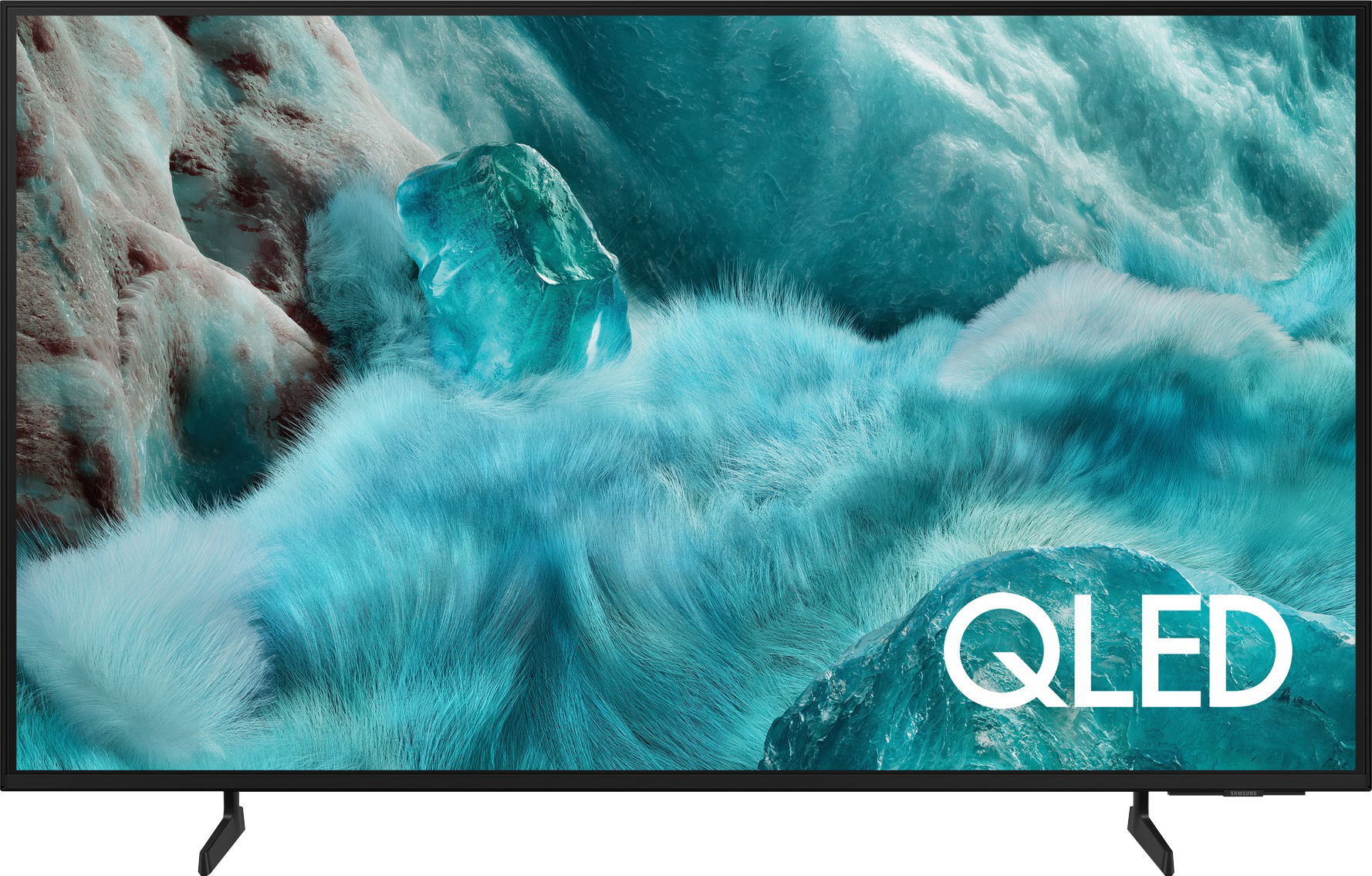
Panel type: LCD VA
Resolution: 3840x2160
System: Google TV
Model year: 2024
Complete the survey to find out the result

Panel type: LCD VA
Resolution: 3840x2160
System: Tizen
Model year: 2025
Complete the survey to find out the result

Overall rating
7.1
5.8
Movies and series in UHD quality
6.4
5.7
Classic TV, YouTube
6.6
5.6
Sports broadcasts (TV and apps)
6.5
5.4
Gaming on console
8.4
6.3
TV as a computer monitor
8.2
6.0
Watching in bright light
7.3
3.9
Utility functions
4.7
7.3
Apps
9.6
8.7
Sound quality
6.8
5.8
Complete the survey to find out what fits your preferences
Advantages
VA matrix with MiniLED backlighting – good contrast and deep blacks
High brightness (841 cd/m²) – excellent visibility even in bright rooms
Supports multiple HDR formats: Dolby Vision, HDR10+
High refresh rate: 240Hz, 144Hz, and 120Hz
Low input lag – perfect for gaming
Google TV system – versatile and comprehensive with broad access to apps
The remote does not require pointing at the screen
Pleasant sound with mild bass
Supports audio formats: Dolby Atmos and DTS:X
Solid native contrast (VA Panel)
Vivid colours thanks to QLED filter
Low input lag (around 10ms)
Advanced and smooth Tizen operating system
Compact sleek design with Type-C charging
Disadvantages
Errors in the translation of the TV Menu
Problems with aggressive dimming algorithms – visible in dynamic scenes
Image scaling and tonal transition enhancement features are unstable
Very low brightness (only 250 nits in HDR)
Lack of many features for gamers including VRR and HGiG – the manufacturer promised something, but in the end, those features are simply not available
Lack of many classic "television" features e.g. recording to USB or PIP
No Dolby Vision
Average quality of digital image processing
Our verdict
The Samsung Q7F is the manufacturer's cheapest model from the QLED line, and it must be admitted that a few advantages can easily be specified here. After calibration, the colours look really good, and the additional QLED filter makes the hues more saturated than in typical budget LCD televisions. Additionally, it features a VA panel that offers quite decent native contrast. It is certainly not at the level of top-tier models, but it performs adequately for everyday viewing. However, the biggest plus is the Tizen system, which is Samsung's flagship offering. It operates smoothly, is feature-rich, provides access to a multitude of applications and add-ons, and at the same time allows for straightforward connection of the television to the SmartThings ecosystem and control of other devices in the home. And basically, this is where the list of advantages ends, as the longer you use the Q7F, the more apparent it becomes that this is a product that is significantly underdeveloped. It's not just about the panel itself with its low brightness and mediocre picture quality in HDR films, but also about the lack of features that typically worked flawlessly in Samsung models. The manufacturer claims the presence of VRR and HGiG, but in practice, they offer no benefit, making it difficult to recommend this television even to casual gamers. It also does not perform particularly well for regular television as the digital image processing is at best average, and the tone transition enhancement feature, which usually worked excellently in Samsung models, hardly functions here. The Q7F is a piece of equipment that can only be recommended to those looking for a television with two phrases on the box: “QLED” and “good Smart TV”. Everyone else receives a rather bland product that falls significantly short of competing even with other more budget-friendly options. It’s a pity because usually, the word "QLED" in Samsung meant something more than just an ordinary television.
TV appearance




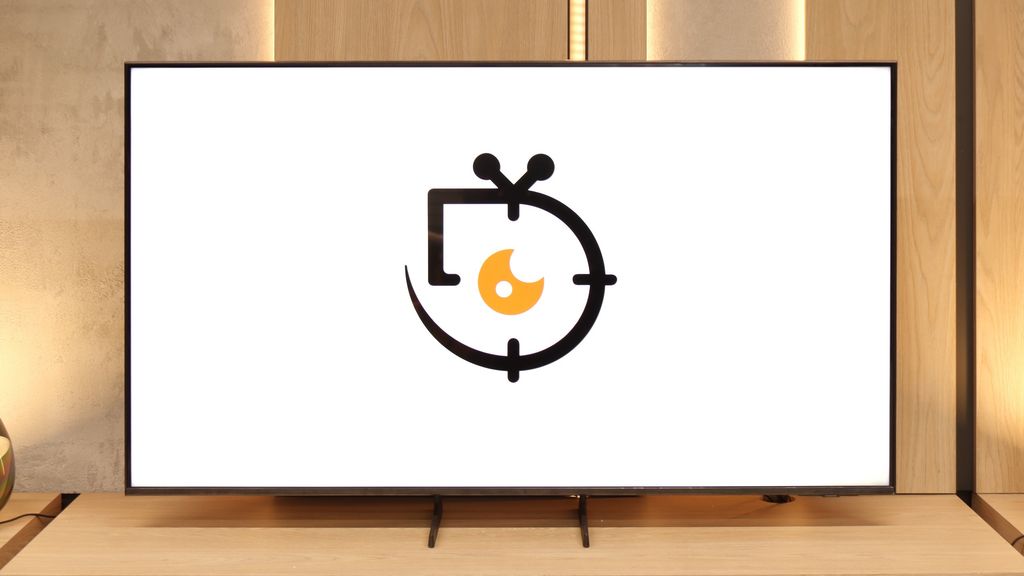
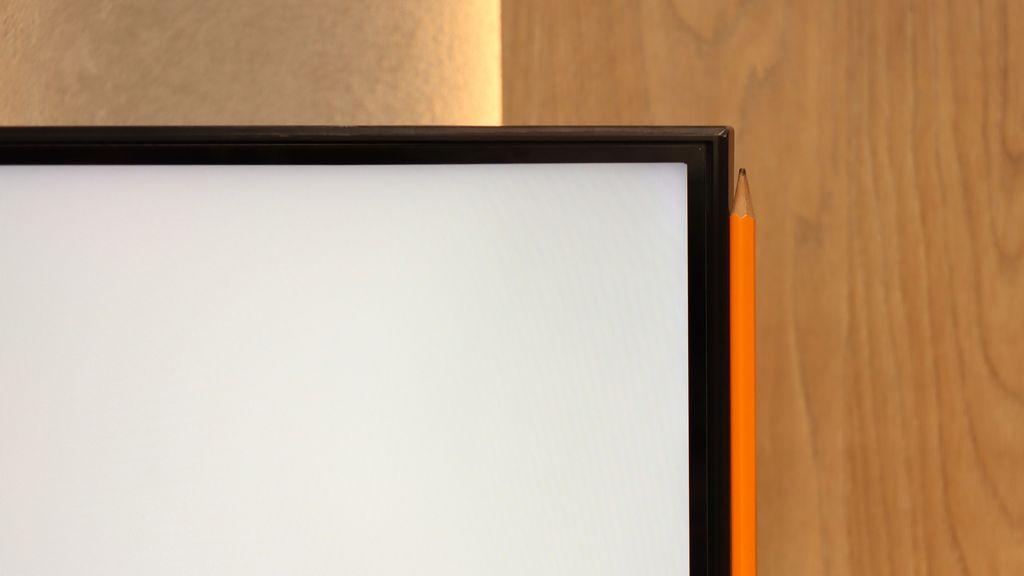
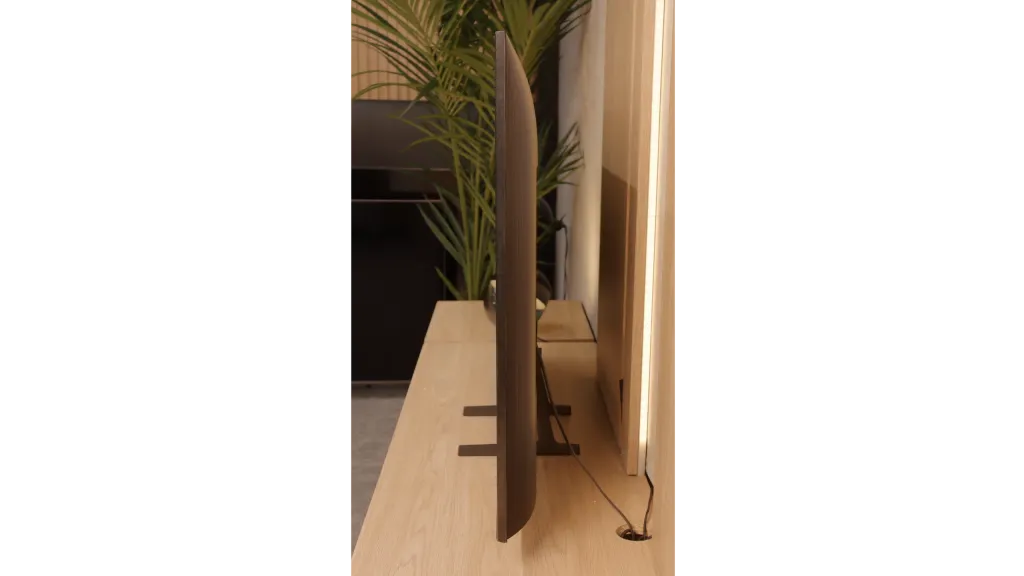
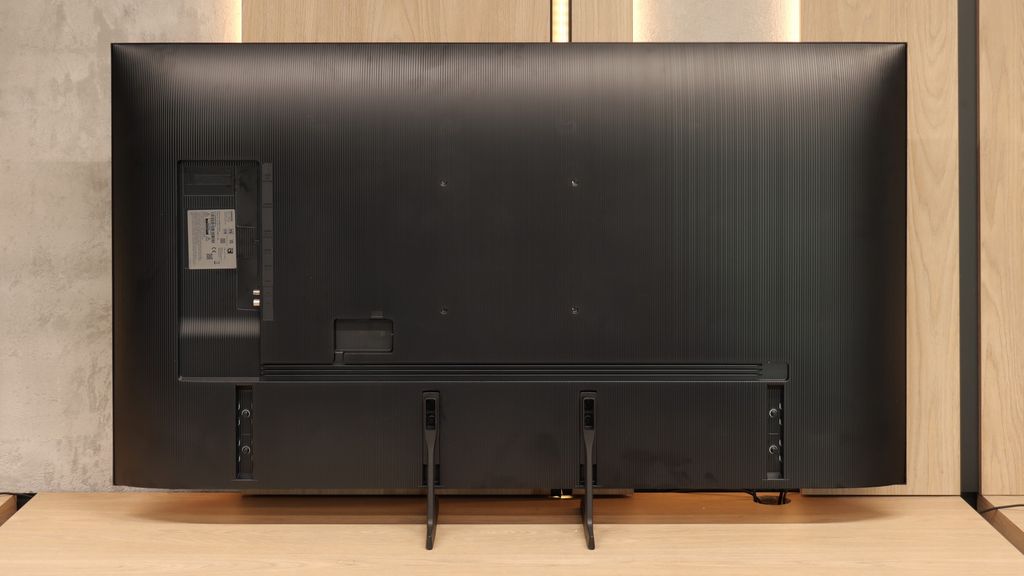
Contrast and black detail
6.8/10
4.7/10
Local dimming function: Yes, number of zones: 308 (22 x 14)
Local dimming function: No
Contrast:

Result
182,000:1

Result
38,050:1

Result
18,300:1

Result
10,150:1

Result
5,450:1

Result
2,850:1

Result
2,750:1

Result
3,300:1

Result
3,050:1

Result
2,750:1
Halo effect and black detail visibility:


Xiaomi S MiniLED is one of the most affordable MiniLED technology televisions available on the market. The model we tested, with a size of 55 inches, features as many as 308 local dimming zones, which is impressive for this price. Additionally, it uses a VA panel, which naturally offers significantly better contrast than IPS panels. On static test images, the television performed excellently, achieving an impressive contrast ratio of 182,000:1 in the film Oblivion. The blacks were deep, and the details in the light and dark areas of the image were clearly separated. However, in more demanding scenes where the image is dynamic, the situation becomes complicated.
Where lies the problem? The main cause is the local dimming algorithms. Although their work shows promising results on static images, during film playback – that is, in the natural working conditions of the television – they operate too aggressively. In dynamic scenes, such as those from the tested film, you can see how the individual dimming zones "work and flicker," which detracts from the viewer's sense of image coherence. This effect is particularly noticeable in motion, when bright objects move against a dark screen. As a result, although Xiaomi S MiniLED offers excellent contrast on paper, in practice the effect is less satisfying. The aggressive operation of the algorithms spoils the perception of dynamic scenes, making the television average in this category. It's a good example of how MiniLED technology requires not only good specifications but also proper optimisation.
The Samsung Q7F in the tested size of 55 inches has a VA panel, which immediately translates to decent native contrast. Values around 3000:1 may not be record-breaking, as we know that panels with more than double the contrast are currently being produced, but it still performs much better than IPS or ADS panels, where black quickly fades into shades of grey or navy blue. Unfortunately, we do not find typical local dimming zones here, but the manufacturer has included something akin to global dimming – that is, dimming the entire screen in relation to the content. The effect? In most scenes, black appears rather solid, although during night viewing sessions, we will still see that it more closely resembles dark navy or grey than true pitch black. Overall, it's okay, but without fireworks – it's not spectacular, but it's also not a disaster.
HDR effect quality
4.8/10
3.7/10
Luminance measurements in HDR:

Result
852 nit

Result
140 nit

Result
385 nit

Result
97 nit

Result
1126 nit

Result
215 nit

Result
225 nit

Result
267 nit

Result
113 nit

Result
250 nit
Scene from the movie “Pan” (about 2800 nits)


Scene from the movie “Billy Lynn” (about 1100 nits)


Static HDR10


Dynamic: Dolby Vision
Dynamic: HDR10+


HDR luminance chart:
Samsung Q7F
HDR luminance
Xiaomi S Mini 2025
HDR luminance
Since the Xiaomi S MiniLED boasts an impressive number of 308 dimming zones, it is time to test how it performs in HDR tests. Starting with luminance, or the ability to display bright scenes, the television achieved nearly 1000 nits of brightness – a result that can be considered outstanding in this class. Do these figures, however, translate to real experiences in film scenes? In the case of less demanding shots, such as those from the film The Meg, the television indeed showed excellent results, reaching up to 900 nits. Such values are impressive and can truly convey the power of HDR effects.
Unfortunately, much like with contrast, it wasn't without issues. When smaller, brighter elements appear on the screen – as in the challenging scenes from Sicario 2 – the aggressive operation of the dimming zones spoils the entire effect. Brightness in these moments drops to just 100 nits. This is definitely too little to capture the full magic of HDR. Instead of a dynamic and detailed image, the viewer receives a muted, almost flat impression, which takes away all the enjoyment from the viewing experience.
In summary, if we are looking for a television with high brightness for watching films during the day, the Xiaomi S MiniLED will easily fulfill that task. However, its inability to precisely manage the dimming zones means that watching films in the evening, especially in demanding HDR scenes, can be more frustrating than satisfying.
Unfortunately, the Samsung Q7F is not one of the brighter televisions, and this has a direct impact on the quality of HDR films. The peak brightness of the panel is just around 250 nits, which is definitely too low to speak of true cinematic experiences. In practice, the image in HDR content does not differ significantly from classic SDR, making it difficult to talk about any "wow effect" that usually accompanies us when watching such films. During tests of film scenes, the image simply looked dark, and the brightness almost always hovered around the aforementioned 250 nits. The worst performances were with shots that included small, intensely shining elements – the global dimming technique used reacted very aggressively in these cases, dimming the entire screen to maintain the effect of black. However, it is worth noting the presence of the QLED coating that expands the colour palette. For a budget QLED model, the Q7F performs quite decently here: the coverage of the DCI-P3 palette is about 93%, and BT.2020 reaches 70%. This means that, despite the low brightness, the colours can still look quite vivid and attractive.
Factory color reproduction
3.9/10
5/10


Factory Mode
After calibration


Factory Mode
After calibration
Xiaomi, like many manufacturers, offers a wide range of picture modes. On the S MiniLED, we can find both IMAX Enhanced and Filmmaker. Our tests were conducted in Filmmaker mode, which theoretically aims to reflect a reference image, but the reality turned out to be somewhat different.
Let's start with the test of SDR content. Here, the television had quite a few issues, especially with white balance. The clearly visible dominance of red made the image look too warm, with all colours taking on a reddish hue. This was particularly noticeable in a comparative scene from the film Star Wars. The brightness characteristics (gamma) also left much to be desired – instead of a smooth transition, we had a real "rollercoaster," with a visible excessive brightening of the screen.
In 4K content, the situation improved significantly. The white balance, although still not perfect, was much more balanced, with a slight dominance of red and blue, but without excessive impact on the overall perception. The EOTF curve (responsible for brightness in HDR) showed some brightening in the brightest parts of the image, which was noticeable, for example, in the test scene from the film Pan that we described earlier. These brightening effects may disturb the precision of the image, but in 4K, the overall effect was much more acceptable than in SDR.
Although Xiaomi S MiniLED can pleasantly surprise with 4K content, its factory settings in SDR require solid adjustments, especially regarding white balance and brightness. This is definitely a television that would benefit from calibration.
The factory colour accuracy of the Samsung Q7F is certainly not one of its strong points. In Filmmaker mode, which theoretically should be the closest to neutral, the issue with white balance immediately stands out. There is too much red on the screen, while blue is lacking. The consequences of this are very easy to notice – white, instead of being neutral, takes on warm, almost slightly orange tones. In the long run, this makes the entire image look somewhat unnatural, and bright areas of the scene may seem unrealistic. The problems become even more evident in HDR content. The graphs show that the television has significant errors in the Color Checker palette, which translates to visible inaccuracies in the actual image. Practically, this means that the colours are not presented as they should be. The Q7F also heavily manipulates brightness; darker elements are overly boosted, losing their cinematic quality, while bright parts may appear dimmed. As a result, the image seems flattened, and contrast, instead of helping to bring out details, only highlights its own limitations. This is particularly frustrating in HDR material, where every detail matters. In scenes where there should be a subtle play of light and shadow, the Q7F either oversteps by brightening too much or conversely – suppresses elements that should draw the eye. This causes the image to lose its depth, and instead of cinematic realism, we have a rather simplified effect.
Color reproduction after calibration
8.4/10
7.6/10




Xiaomi S MiniLED 2025 is a television that gains a completely new life after calibration. The results are truly outstanding and show how much potential is in this model.
In SDR mode, the white balance is nearly perfectly aligned. The errors are so minimal that in many cases they can be considered negligible. This is confirmed by the results of the Colour Checker palette, where the errors did not exceed a value of 2 ΔE – this is really a rare result. Gamma also performs very well, although at the beginning of the graph there are slight brightenings in the darkest elements. However, this is a minor exception that does not significantly affect the perception of the image.
In 4K HDR materials, the calibration also brought visible improvements, particularly in the white balance. The image looks natural and cohesive. However, the characteristic of brightness remains a problem. EOTF analysis in film materials shows that the television tends to over-brighten or under-darken the smallest elements on the screen. This is a result of limitations in the dimming algorithms we discussed earlier with HDR and contrast testing. Unfortunately, this is a technical characteristic of this model that cannot be completely eliminated.
Despite this minor flaw, the calibration allowed for maximising the capabilities of this television. The image now looks phenomenal, and its quality impresses in every type of material. Xiaomi S MiniLED 2025 shows that with the right settings, it can compete with more expensive models.
After professional calibration, we managed to bring the Q7F into order – at least in terms of SDR content. The picture in this mode looks really good: the white balance has been set correctly, the colours appear natural, and errors in the colour palette have dropped to levels that are practically invisible to the eye. Gamma behaves exemplary, and the only minor drawback is a slight lightening of smaller elements, which results from the lack of local dimming. For everyday watching of television or films in standard quality, the Q7F performs surprisingly well.
It was significantly harder to tame HDR content. Despite adjusting the white balance, the television still heavily manipulates brightness, causing scenes to sometimes look unnatural – what should be subtly darker can be overly brightened, and bright areas of the picture can occasionally appear dimmed. The end result is better than in factory settings, but it is evident that the structural limitations of the Q7F do not allow for the full potential of HDR materials to be fully realised.
Smoothness of tonal transitions
8/10
9/10












The fluidity of tonal transitions in Xiaomi S MiniLED 2025 is impressive. Even in the theoretically most difficult scene with red water, the television performs excellently – we did not notice any major issues. Minor imperfections occur in scenes like The Kingsman or The Martian, where subtle colour blending can be observed. Nevertheless, Xiaomi stands out in this category, offering one of the best qualities of tonal transitions in its price range. This is definitely a strong point of this television.
The fluidity of tonal transitions in the Q7F is really quite good. The gradients are smooth, without strong stair-stepping or artificial divisions that can be quite noticeable in cheaper televisions. Even in more challenging scenes, such as the one from The Revenant or the red shot with the actor swimming in water, the image maintained quality and simply looked good. If someone were to look very closely, they might notice slight imperfections in extremely demanding moments, but they are subtle enough that most people won't even notice them. For this price range, the Q7F performs surprisingly solidly in terms of gradation, and it's hard to find anything significant to criticise.
Image scaling and smoothness of tonal transitions
6.7/10
5/10
Smooth transition function

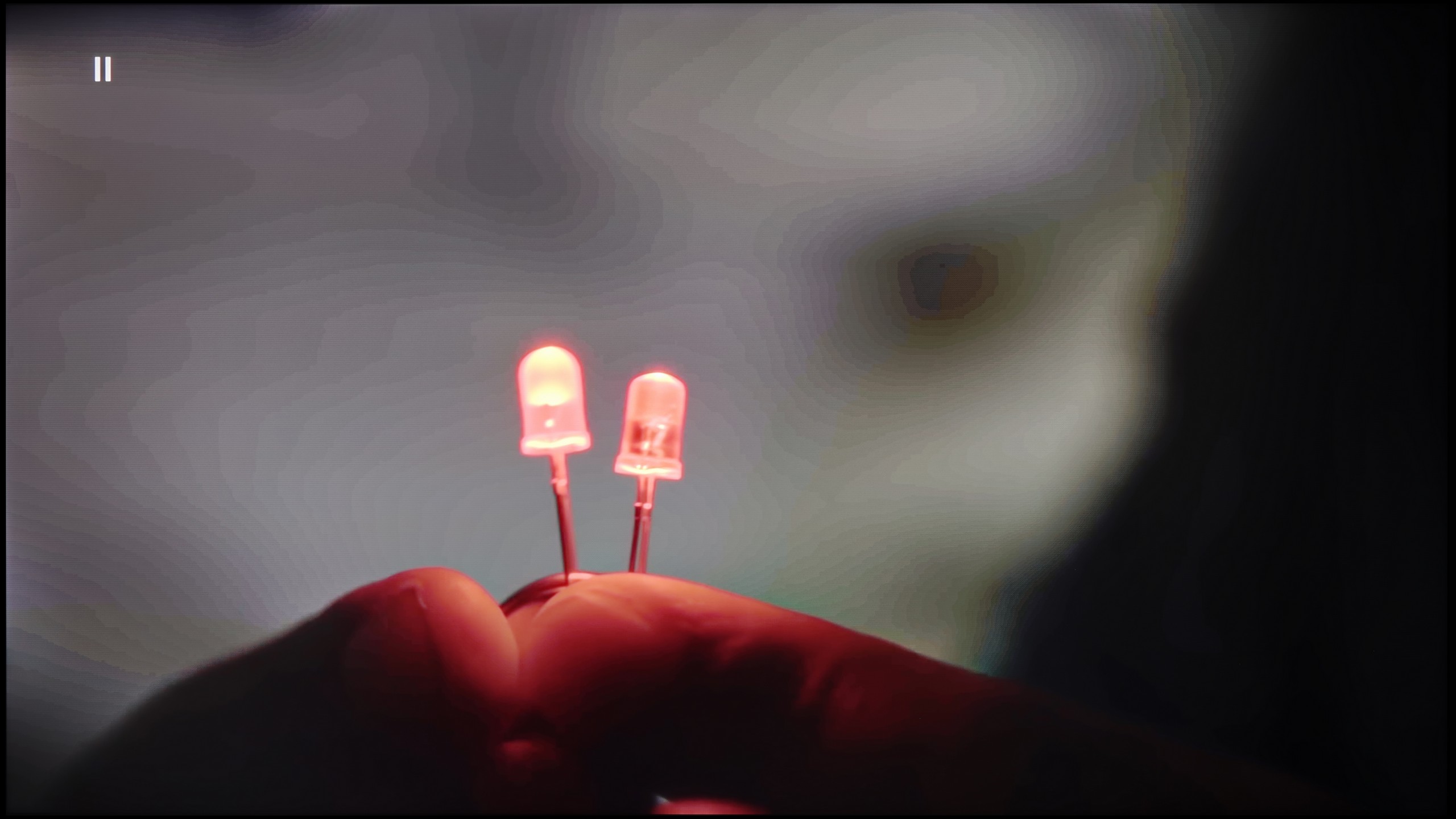
Image without overscan on the SD signal


When it comes to tonal transitions in lower quality materials, such as YouTube or television, the Xiaomi S MiniLED is equipped with a feature called "Colour Contour Removal." At the "low" setting, it performs quite well, although its effectiveness can be inconsistent. Sometimes it seems as though the television is struggling to smoothen, which creates a certain dissonance. On the positive side, we did not notice any visible side effects, although due to the instability of this feature, one could suspect that unexpected issues may arise in certain situations.
Image scaling also performs moderately. There is some slight jaggedness, particularly on thin elements like branches, and subtitles can appear slightly jagged. While this may not be very bothersome, a more discerning eye will certainly pick up on these shortcomings. Overall, most users should be satisfied with the quality of scaling and smoothing, but the television will not satisfy those who expect perfection in every frame of the image.
Upscaling and digital image processing on the Q7F is a bit of a sine wave. On one hand, we have really nice upscaling – weaker sources look better than one might expect. The image becomes clearer, sharper, and even older films or terrestrial television perform adequately. Samsung has been strong in this area for years, and the Q7F confirms that. On the other hand… there are some issues. The television has a problem with overscan – part of the image is simply cut off, and it doesn't look very elegant. Additionally, we were let down by a feature called "noise reduction", which should improve the smoothness of tonal transitions in weaker materials. In other Samsungs, it works relatively well, but here it makes practically no difference – the banding in gradients is still there. It's a bit of a shame, as one could have expected more from a model that is aimed at users looking for a display for SDR content.
Blur and motion smoothness
7/10
5.5/10

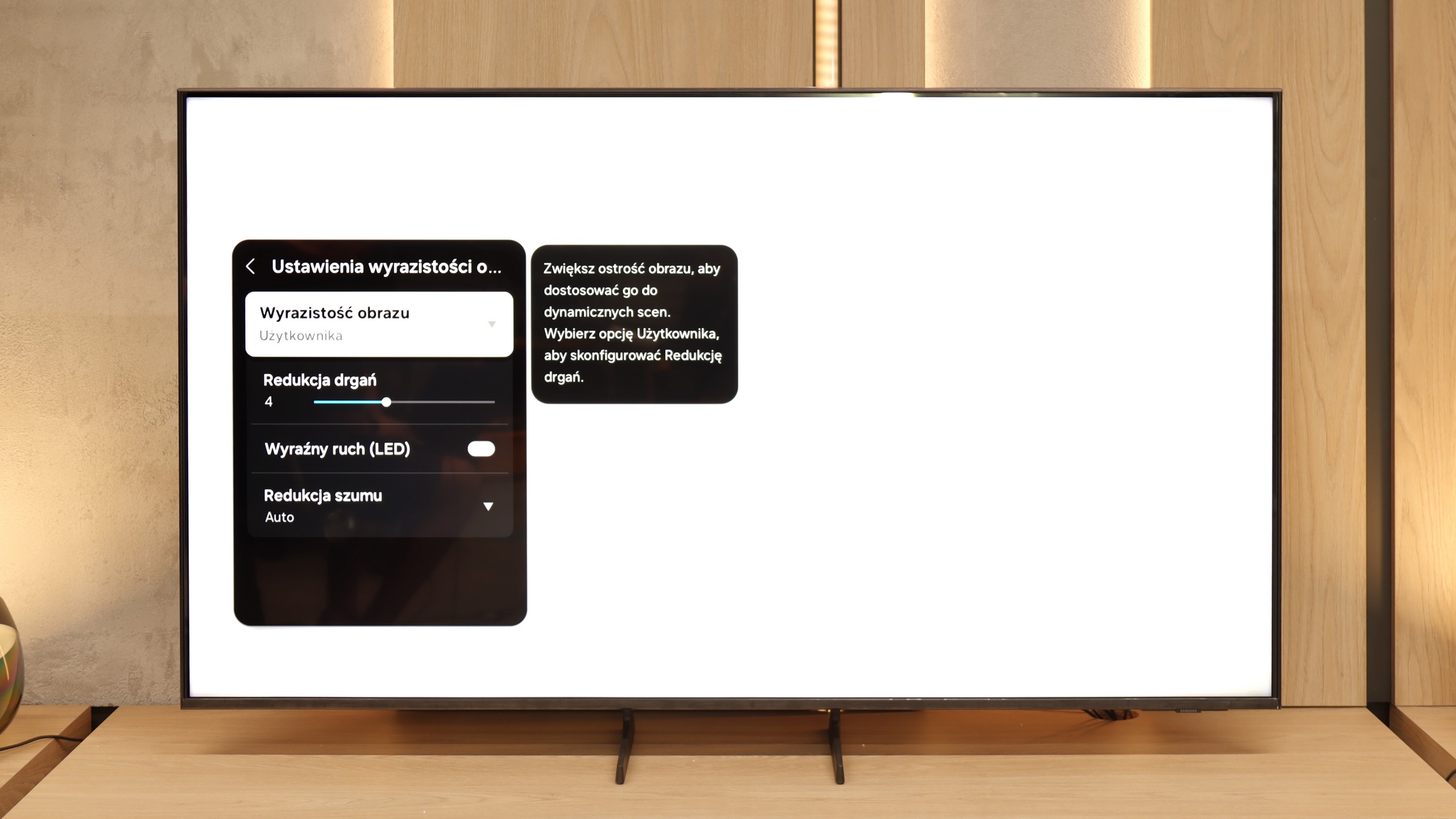
Blur (native resolution, maximum refresh rate):



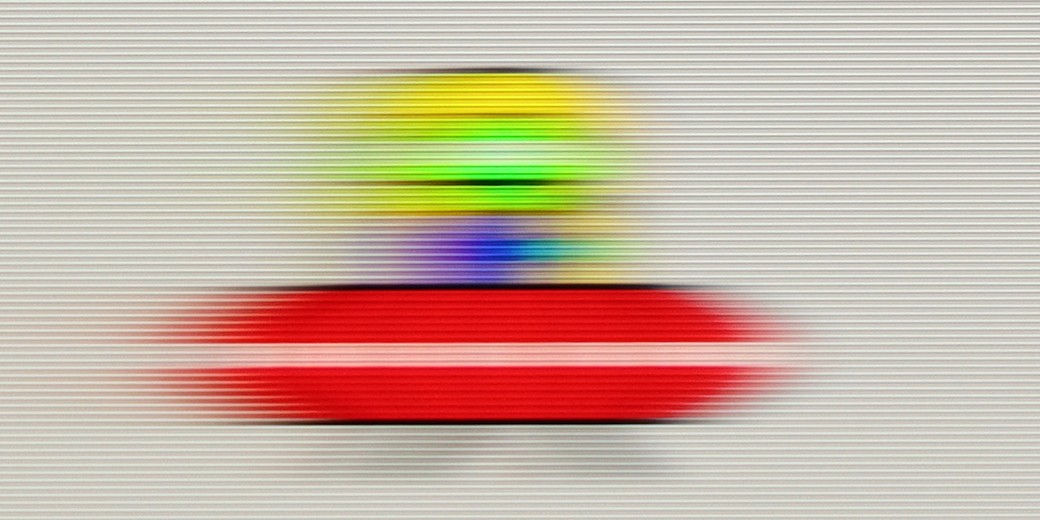
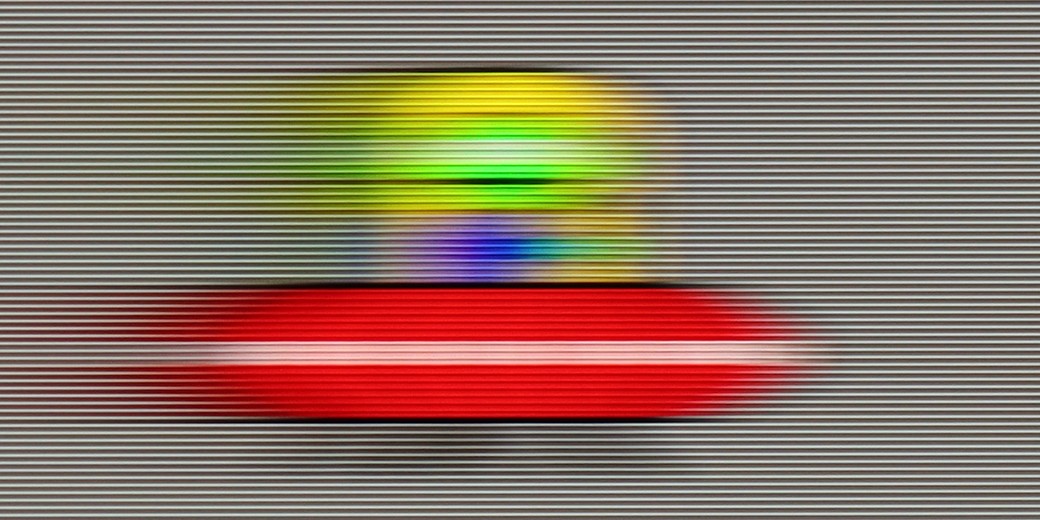
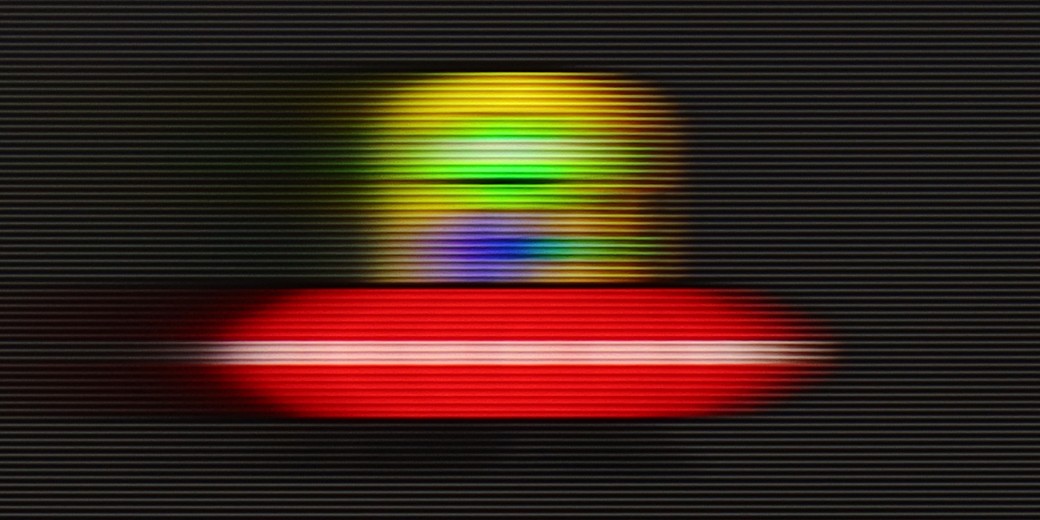
Blur (BFI function enabled):
Image flickers in this mode



Xiaomi S MiniLED 2025 is equipped with a panel featuring a refresh rate of 4K@120Hz (1080p@240Hz), which provides sufficient smoothness for both watching dynamic sports broadcasts and playing the latest games. This level of refresh rate makes the image appear fluid, even in the most intense scenes. Additionally, the television offers a “Motion Smoothing” feature that allows you to adjust the way the image is displayed in films. You can choose a more frame-like effect, typical of the cinematic experience, or a smoother one, reminiscent of the so-called “theatrical effect.” This way, every user can tailor the settings to their preferences and enjoy smooth images in their favourite content.
Ghosting and motion smoothness in the Q7F are probably the most budget-friendly elements of this television. The 60 Hz panel makes itself known, with noticeable ghosting, especially in dynamic scenes, and it's rather difficult to regard this model as equipment designed for watching sports or playing fast-paced games. In tests with the little green man, a long trail was left behind, similarly to how a ball in a football match would leave streaks.
On the plus side, the presence of motion smoothing must be acknowledged. In films, it actually makes a difference – especially since most material is recorded at 24 frames per second. Here we can decide whether we prefer a more "cinematic" image, with slight judder typical of cinema, or a smoother, more "television" approach. This part works quite well and helps to improve the viewing experience for series and films.
Console compatibility and gaming features
9.8/10
3.3/10
- ALLM
- VRR
- VRR range48 - 144Hz
- Dolby Vision Game Mode
- Correct implementation of HGIG
- 1080p@120Hz
- 1440p@120Hz
- 4K@120Hz
- Game bar

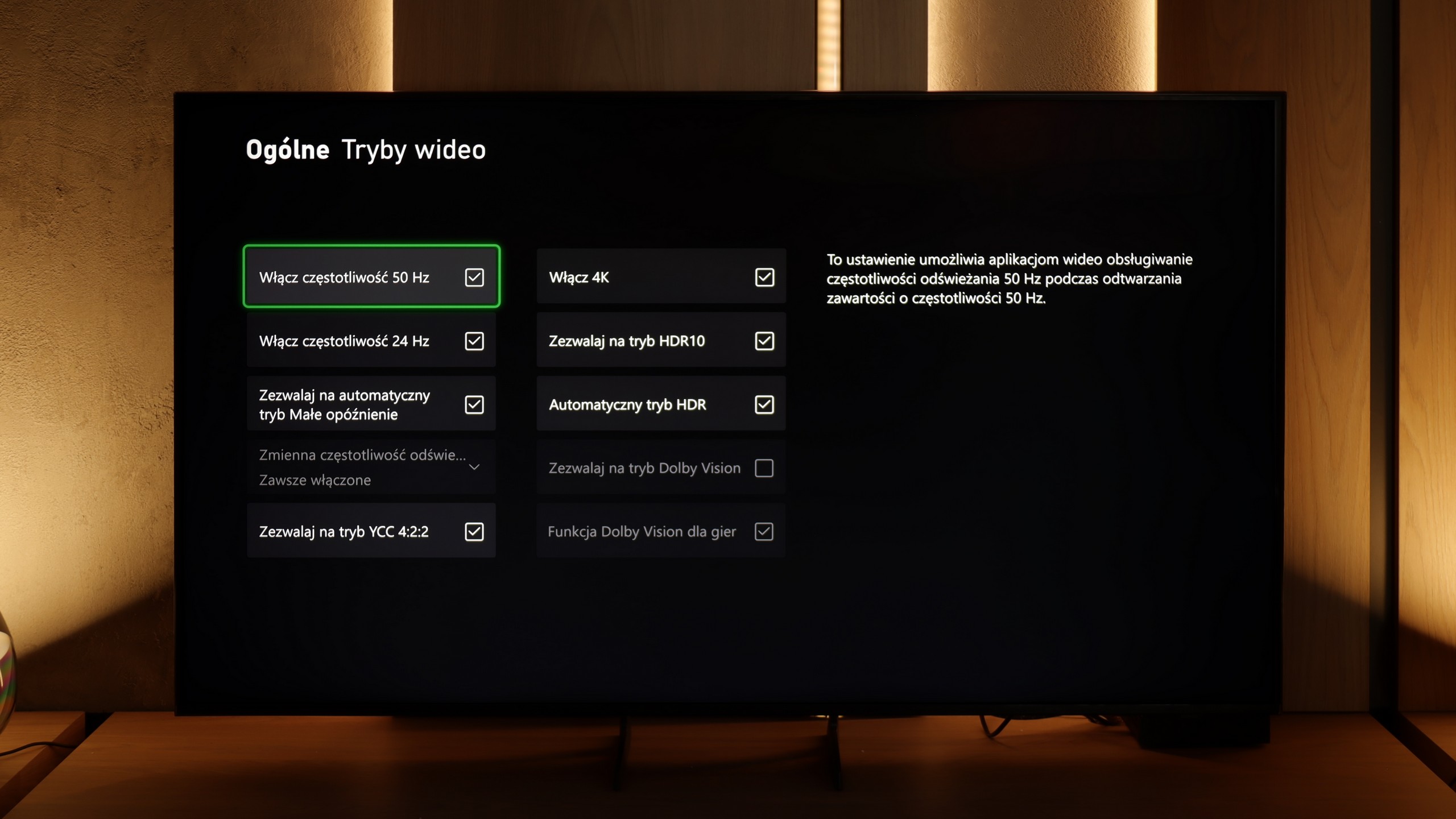

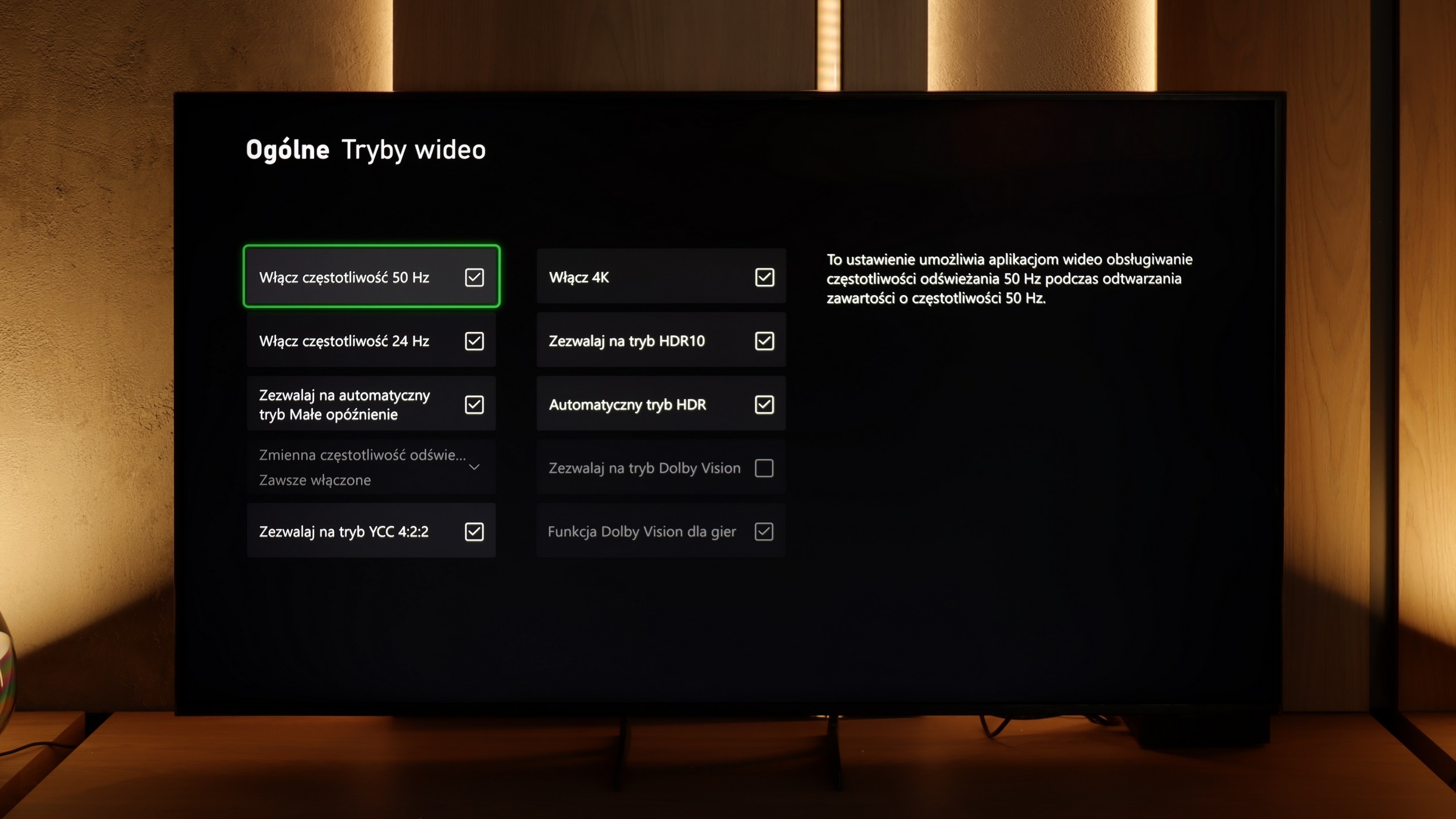

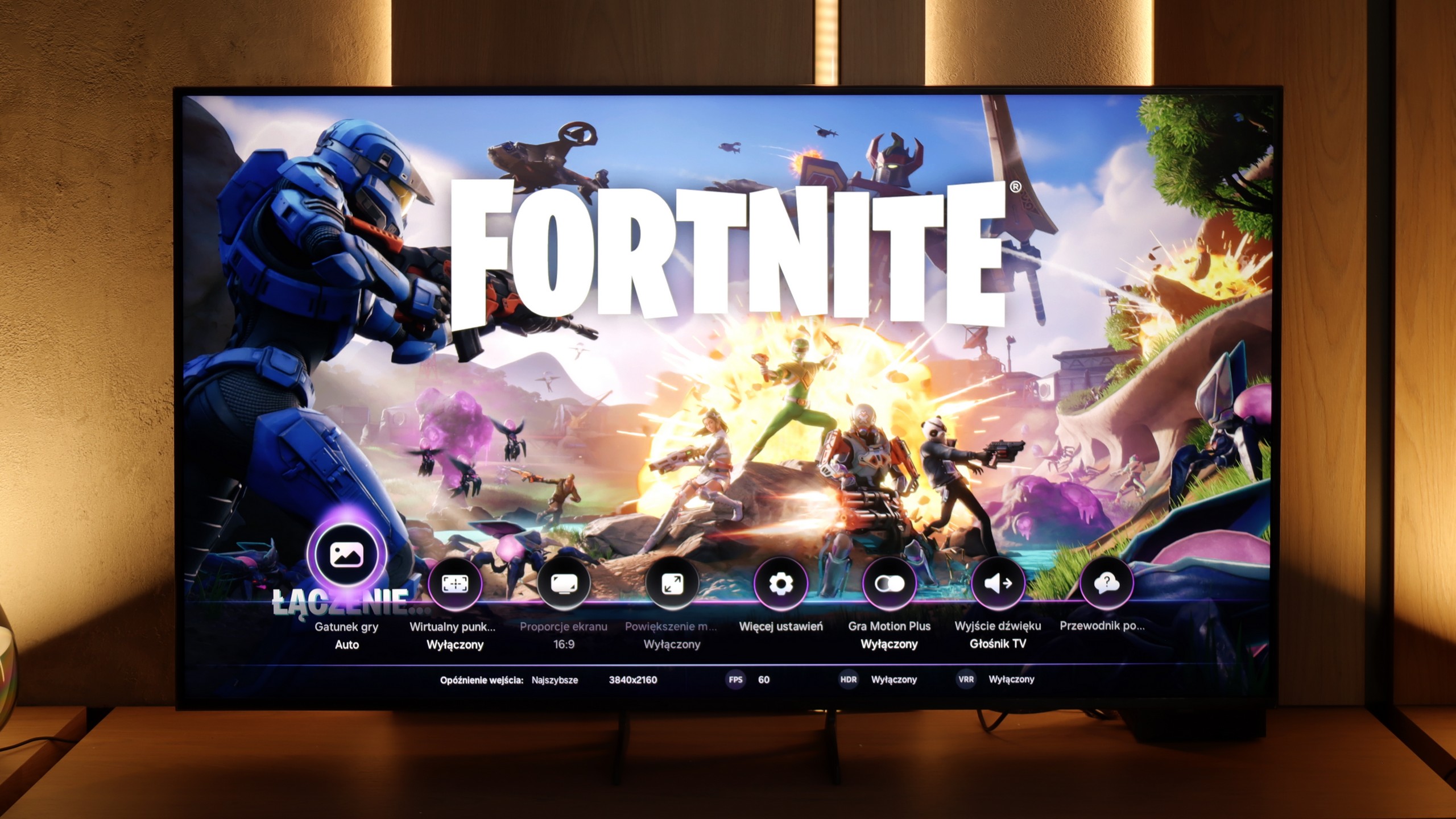

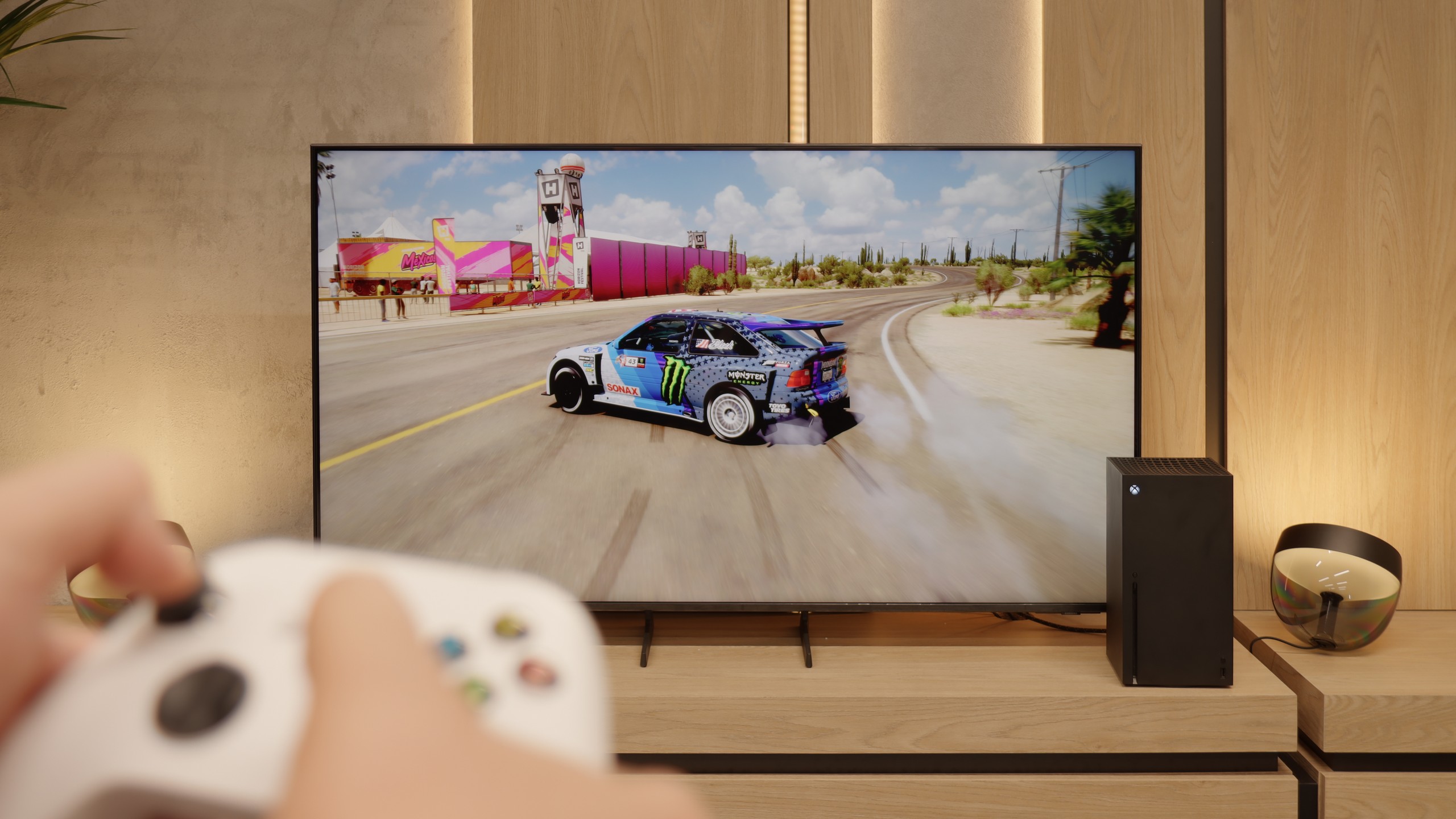
Xiaomi S MiniLED 2025 is a television that has a lot to offer gamers. With two HDMI ports boasting 48 Gbps bandwidth, we can easily connect modern consoles or PCs, utilising their full potential. Additionally, the ALLM feature automatically switches the TV to low-latency mode – something we will appreciate during dynamic games without annoying lags. Regardless of what we connect, it functions smoothly, and the television handles various resolutions exceptionally well. There is also the GameBar, which may not look as impressive as the "bars" from the competition, but makes up for it with practicality. It is a simple settings panel that allows us to quickly change the most important options or check statistics – an ideal solution when time is of the essence.
However, we must admit that operating the television itself – or rather finding the gaming features within it – posed a significant challenge for us. We approached the testing of the Xiaomi S MiniLED 2025 several times to locate all the necessary options. The hidden menu allowed us to discover the "GameBoost" feature, which enables switching the television to 240 Hz mode, activating VRR, and allows for enabling picture in HGIG mode.
In summary, the Xiaomi S MiniLED 2025 is a television that definitely deserves praise in the gaming hardware category. Its rich set of features – 240 Hz mode, VRR, HGIG, and "GameBoost" – provides an exceptional gaming experience. Unfortunately, the intuitiveness of the menu itself leaves much to be desired and may pose a challenge for the average user.
Features for gamers in the Samsung Q7F is a topic that evokes quite a lot of mixed feelings. On the one hand – no sensible person expected miracles here, as it is after all a 60 Hz television and it was clear from the start that it would not be a device for squeezing the maximum out of a console or PC. On the other hand, since the manufacturer promised specific solutions in promotional materials, it is natural that we wanted to see them in practice. At the outset, it’s quite decent. The automatic game mode (ALLM) works, so there’s no need to manually fiddle with the settings; the console automatically switches the television to low-latency mode. Additionally, we have the Game Bar, which looks impressive and allows you to check a few basic parameters without leaving the game. And this is where the good news ends.
The biggest problem with the Q7F is VRR, or rather its absence. Yes, an appropriate icon appears in the menu, and you can even see it in the Game Bar, but throughout the entire test, the feature remained inactive and could not be enabled in any way. The situation with HGiG is even more painful; this option was indeed available at the beginning, but after a software update, it completely vanished, which is simply unprofessional. Therefore, the Q7F is only suited for the absolute basics. Of course, you can turn on the console, play some calmer titles, and enjoy low input lag, but if someone is counting on more advanced features that the manufacturer promised, they will be disappointed. This is not a television to buy with gaming in mind, and it's better to be aware of that before making a purchase.
Input lag
9.8/10
10/10
SDR
HDR
Dolby Vision
The input lag of the Xiaomi S MiniLED 2025 is one of its biggest advantages. 8 ms for 120 Hz content and 17 ms for 60 Hz is an absolutely remarkable performance that will satisfy even the most demanding gamers. Furthermore, the Dolby Vision mode in games deserves praise. Unlike many competing models, Xiaomi maintains a low input lag even in this mode, making it an excellent choice for fans of high-quality HDR gaming experiences.
Input lag on the Samsung Q7F is really good for a television with a 60 Hz panel. Measurements showed values below 12 ms, which means that for regular gaming on a console, this model is more than sufficient. Of course, it is not on the level of high-end 120 Hz screens, which can go as low as 6–7 ms, but in everyday practice, it is hard to talk about noticeable delay. In this respect, the Q7F does not fall behind its competitors in its segment and can easily be considered a safe choice for casual or sports gaming. At least in this regard.
Compatibility with PC
8.2/10
6/10

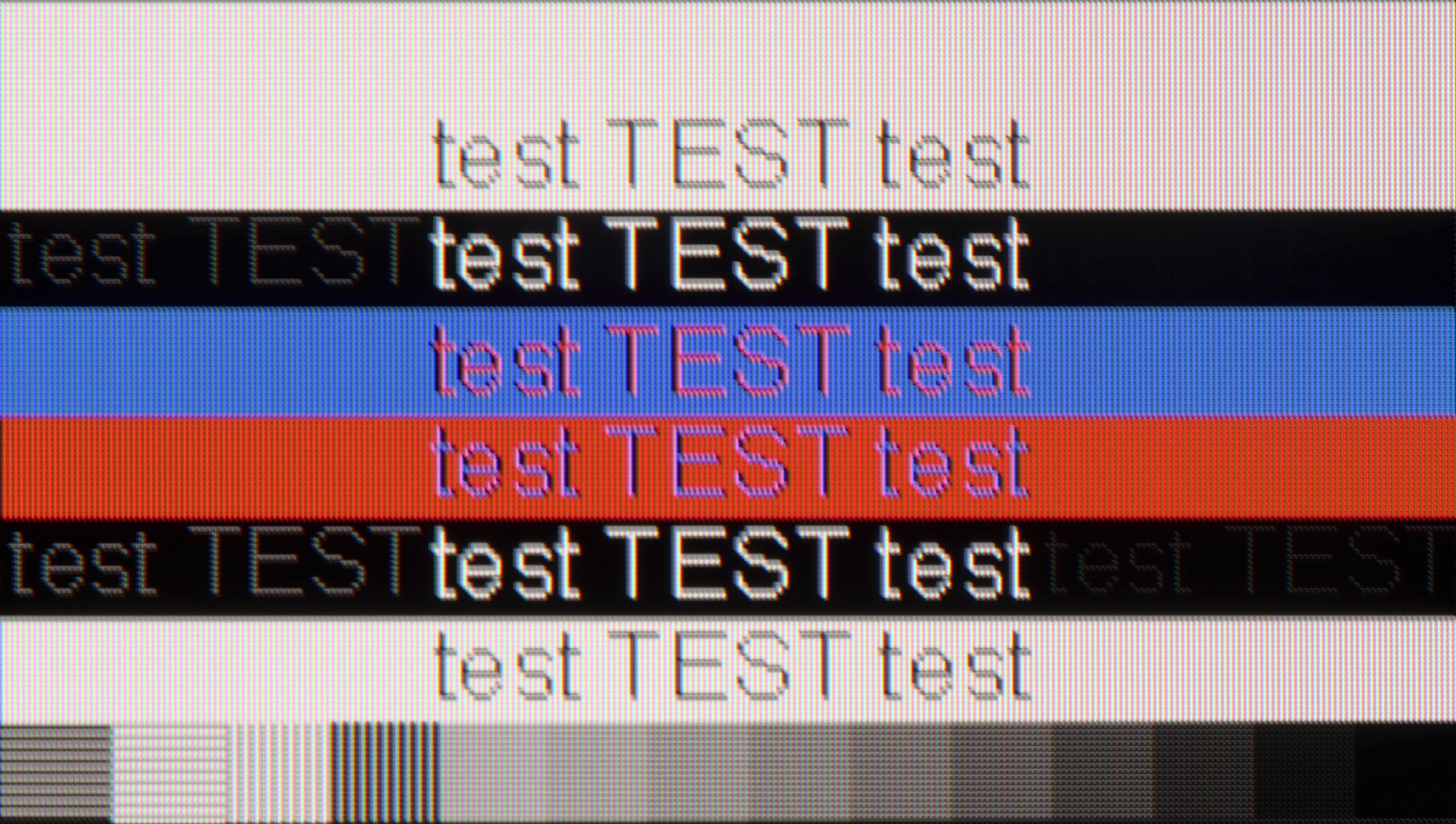
Xiaomi S MiniLED 2025 is a good choice if we need a television for working with a computer. The fonts are very clear thanks to the support for chroma 4:4:4, making it perfect for office work or browsing documents. It also performs excellently in gaming – high refresh rates, G-SYNC, and low input lag ensure smooth gameplay, which will satisfy most gamers.
Collaboration with a PC on the Q7F is decent, although it is not a television that will satisfy the most demanding users. Fonts are displayed clearly and sharply, so it is perfectly fine to work on it – especially for daily office tasks or browsing the internet. With thin letters, one can notice slight shadowing, but it is not something that interferes with normal use. In a smaller size, the Q7F can indeed work as a computer screen, although one must remember its limitations. The lack of variable refresh rate means we cannot use G-Sync or FreeSync, and 60 Hz practically closes the door to more demanding PC gaming. For work and light usage, it will be okay, but for serious gaming, it is definitely better to look for something higher in Samsung's offering.
Viewing angles
3/10
3.5/10
In terms of viewing angles, Xiaomi S MiniLED 2025 does not impress. This is a typical problem with VA panels, which do not perform well without additional coatings that widen viewing angles. The image begins to lose quality when watching the television from the side – colours fade and contrast significantly drops. However, the advantage of VA panels is their considerably better contrast compared to IPS panels, which in turn win in terms of wider viewing angles. This is a classic compromise where one has to choose between better blacks and a more universal image seen from various places in the room.
The viewing angles on the Q7F are simply poor – typical for a VA panel. Just sitting slightly to the side immediately shows that the image loses quality. Colours fade, contrast clearly drops, and blacks start to resemble grey more than anything deep. This is a television that is definitely best viewed head-on, and any wider viewing angle comes with compromises.
TV efficiency during daytime
7.3/10
3.9/10

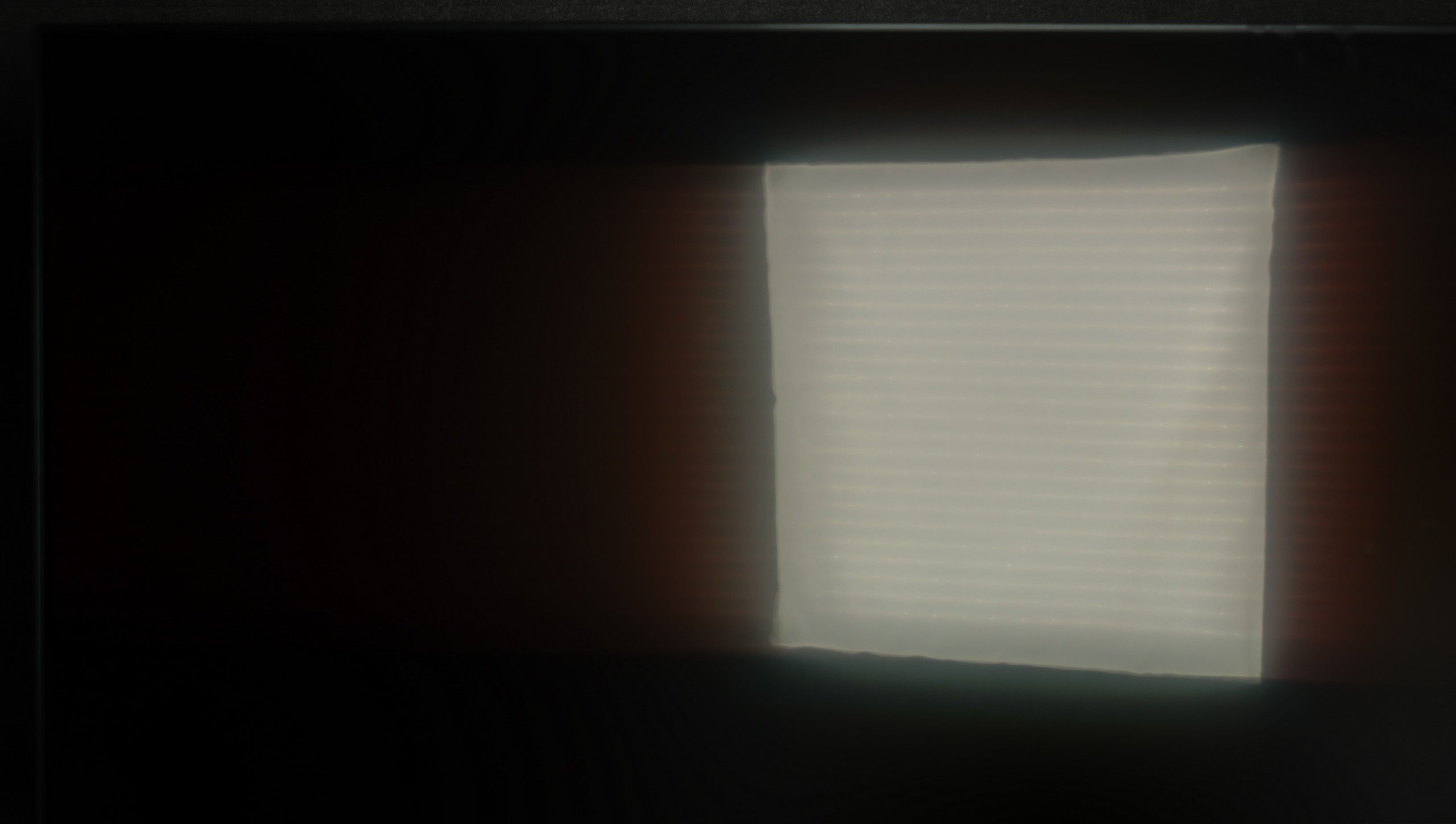


Matrix brightness
Average luminance SDR
Samsung Q7F: 237 cd/m2
Xiaomi S Mini 2025: 841 cd/m2
Xiaomi S MiniLED 2025 is equipped with a satin finish on the panel, which performs fairly well in reducing reflections. On the screen surface, one can notice light reflections, which can be somewhat distracting in bright rooms. However, the key feature that saves this television in daytime use is its brightness. With a value of 841 cd/m², the screen performs effortlessly even in very sunny interiors. This is more than enough to comfortably watch television, films, or sporting events. Importantly, the television also handles more demanding content, such as winter sports, where the dominant white can pose a significant challenge for other televisions. Here, Xiaomi definitely delivers.
The performance of the Q7F during the day unfortunately does not impress. Due to its low brightness, the screen quickly capitulates in very sunny rooms. It is therefore hard to recommend it to those who plan to watch television in a bright living room with large windows. In moderately lit rooms, it still performs adequately, but in bright light, the picture loses clarity. Additionally, the fact that the panel does not always effectively handle glare means reflections can be distracting during the day. This is more of a screen for evening viewing rather than for daily sessions in full sunlight.
Details about the matrix
Subpixel Structure:

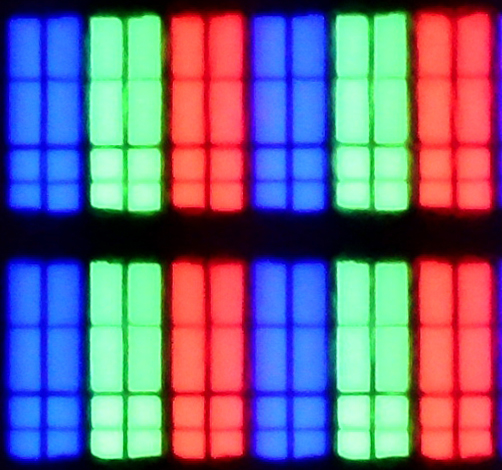
Panel uniformity and thermal imaging:


TV features
4.7/10
7.3/10
- HDMI inputs1 x HDMI 2.0, 2 x HDMI 2.1 48Gbps3 x HDMI 2.0, 0 x HDMI 2.1
- OutputsToslink (Optical audio), eARC (HDMI), ARC (HDMI), Mini-Jack (Headphones)Toslink (Optical audio), eARC (HDMI), ARC (HDMI)
- Network InterfacesWi-Fi 2.4GHz, Wi-Fi 5GHz, Ethernet (LAN) 100MbpsWi-Fi 2.4GHz, Wi-Fi 5GHz, Ethernet (LAN) 100Mbps
- TV receptionDVB-T, DVB-T2, DVB-S, DVB-S2, DVB-CDVB-T, DVB-T2, DVB-S, DVB-S2, DVB-C
Classic features:
- Recording to USB (terrestrial TV)
- Recording programming
- Picture in Picture (PiP)
- RF remote control (no need to aim at the screen)
- Backlit remote control
- Teletext
- Audio only mode
- Bluetooth headphones support
- Simultaneous Bluetooth headphones & TV audio
Smart features:
- AirPlay
- Screen mirroring (Windows Miracast)
- Voice search
- Voice search in native language
- Ability to connect a keyboard and mouse


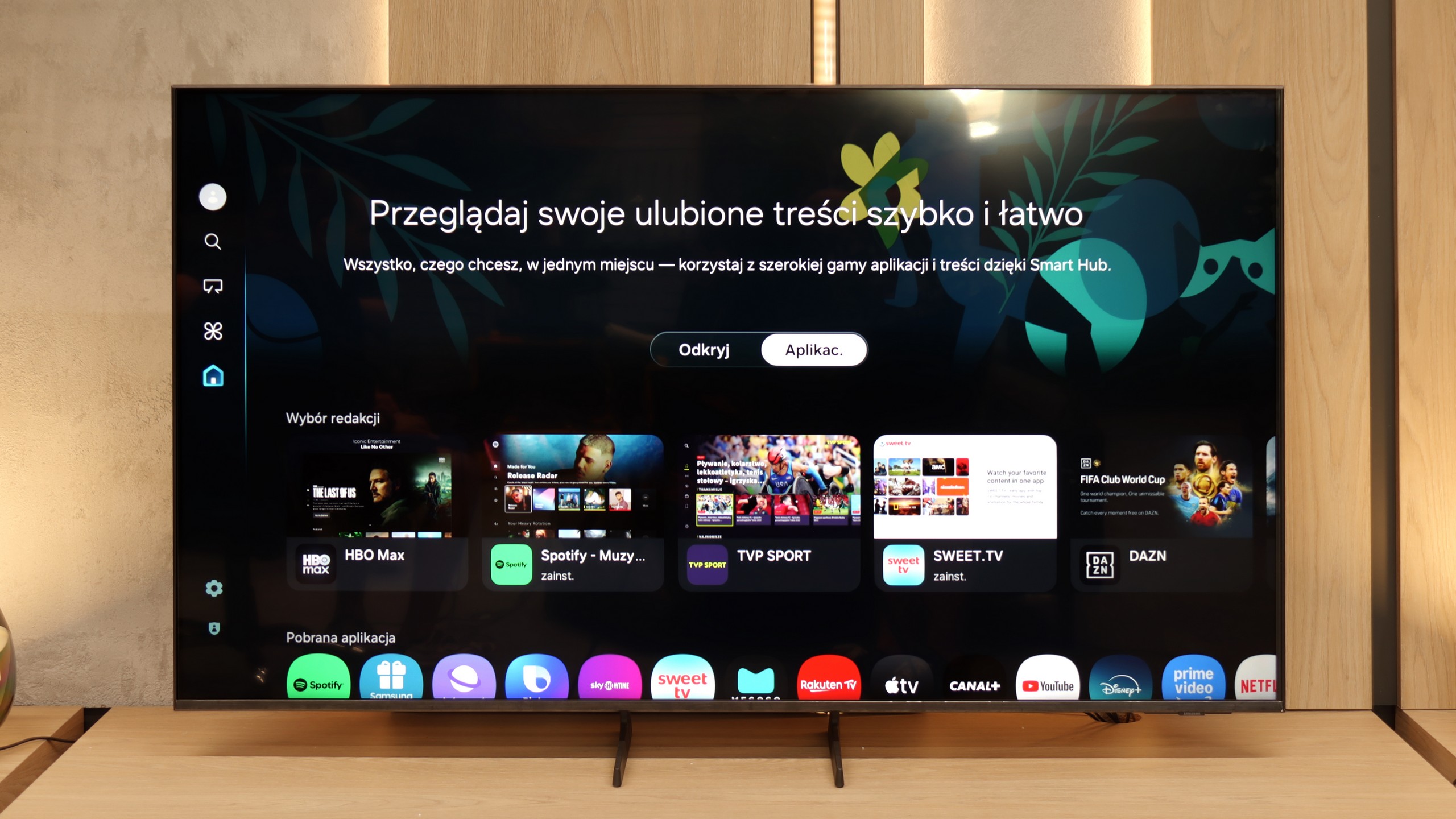
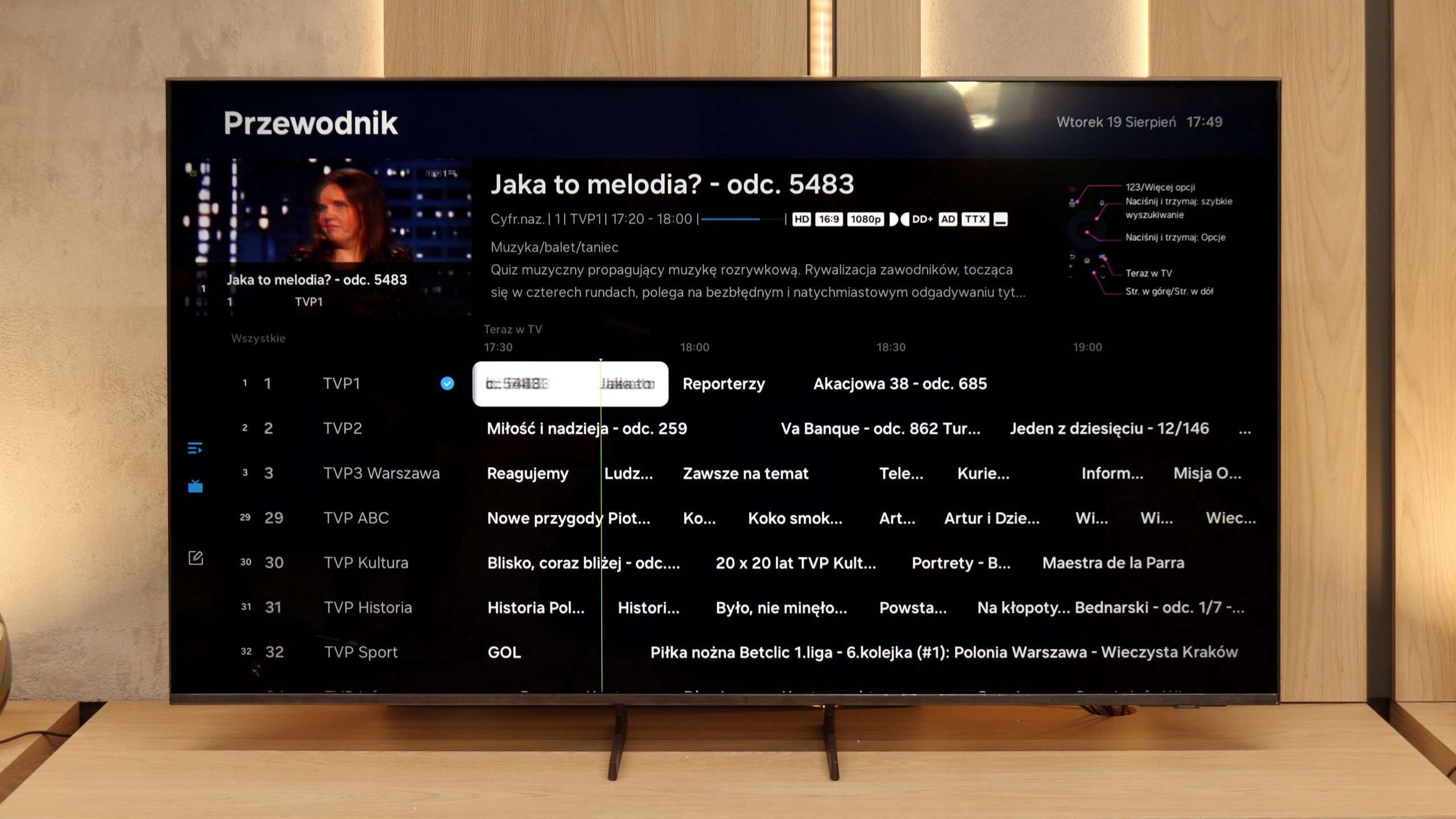
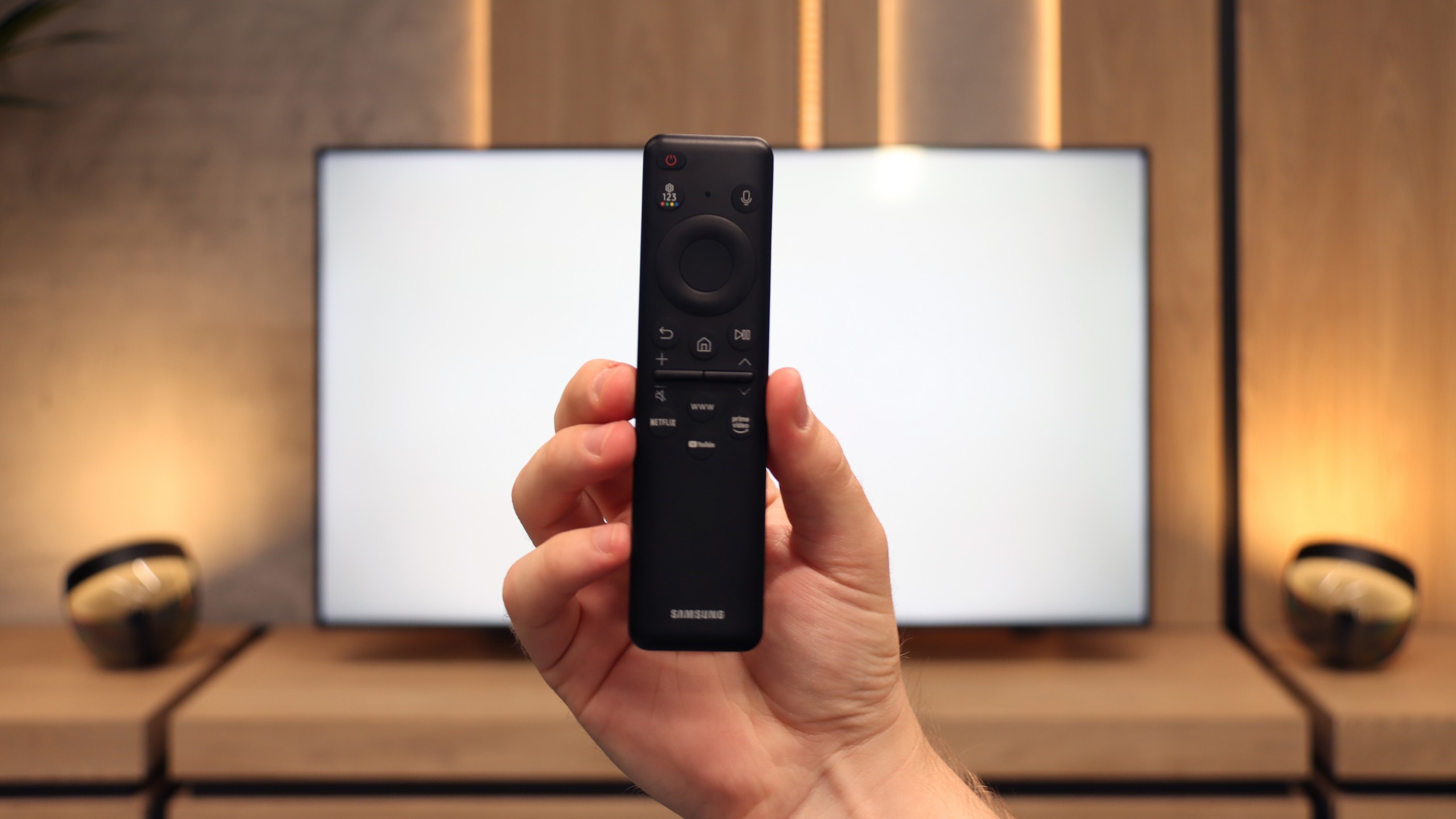
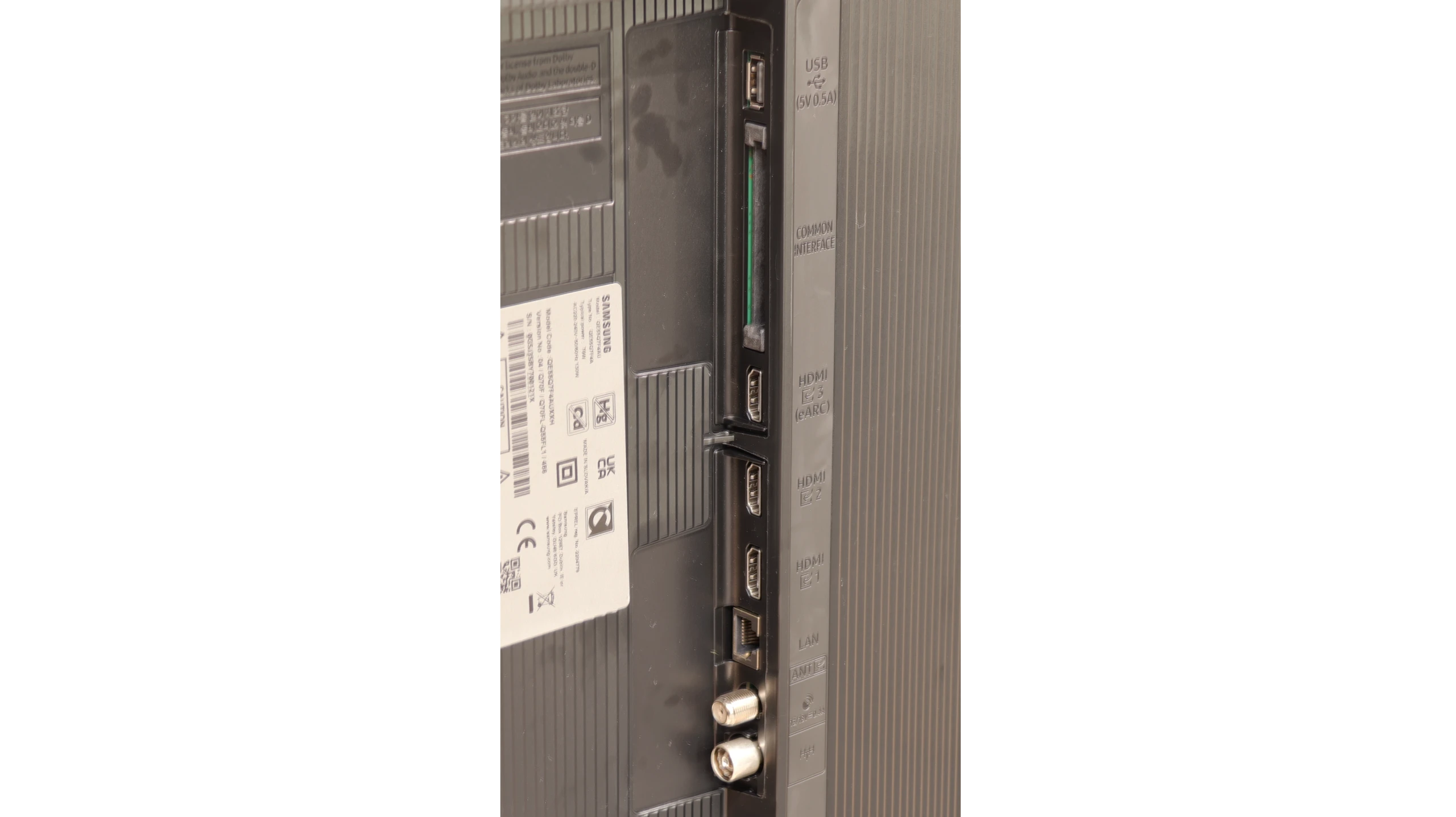
Xiaomi S MiniLED 2025 is a television that stands out thanks to the Google TV system. It offers access to the most popular streaming services, music apps, and various useful features that significantly enhance the everyday experience of using the television. For those who enjoy personalisation, the system also provides plenty of configuration options.
The built-in voice assistant operates smoothly – we can not only control the television but also ask about the weather forecast or set a reminder for the next day. Unfortunately, we noticed during testing that some features have difficulty translating into Polish, which can be frustrating, especially for those less adept at navigating the settings. Despite this, the overall impression is very good, and minor shortcomings can be corrected in future updates.
The device manages connectivity well. Wireless connections to Windows computers or Apple devices proceed smoothly, and thanks to Bluetooth, we can easily connect headphones, keyboards, or other accessories. The remote control is simple and convenient – it works from any position, so aiming at the screen is not necessary. However, there are some shortcomings. If someone frequently uses traditional television, they may feel the lack of recording features from tuners or the PiP (picture in picture) option. This somewhat limits capabilities, but for those focusing on streaming and modern functionalities, it shouldn't be a significant issue.
Xiaomi makes up for these shortcomings with an excellent operating system. Google TV is one of the most advanced and user-friendly systems available on the market, which makes the television perform really well in everyday use.
Smart TV – Tizen System
Here Q7F shows its strongest side. Samsung has been developing the Tizen system for years, and it is evident that we are dealing with a mature, well-refined platform. Everything runs smoothly, the menu does not lag even when switching between heavier applications, and installing additional programmes from the library is quick and hassle-free. In addition, there is full support for AirPlay, integration with voice assistants, as well as a wide range of add-ons – from cooperation with devices in the SmartThings ecosystem to the ability to control Philips Hue smart lighting or other smart gadgets. Samsung strongly focuses on advanced networking features, and this is evident – in terms of Smart TV, the Q7F has absolutely nothing to be ashamed of, and on the contrary, it can embarrass more expensive competitors.
Classic Features
On the side of classic, “television” solutions, it is clear that the manufacturer has bet everything on the smart card. We will not find any USB recording or PiP mode here, which used to be standard features. It is evident that the Q7F is meant to be primarily a multimedia centre, rather than a device for those accustomed to more traditional solutions. Fortunately, several practical additions are not lacking – we have Bluetooth for pairing headphones or speakers, and the option to change the font size in the menu, which will be appreciated by users with weaker eyesight.
Playing files from USB
7.3/10
9/10
Supported photo formats:
Maximum photo resolution:

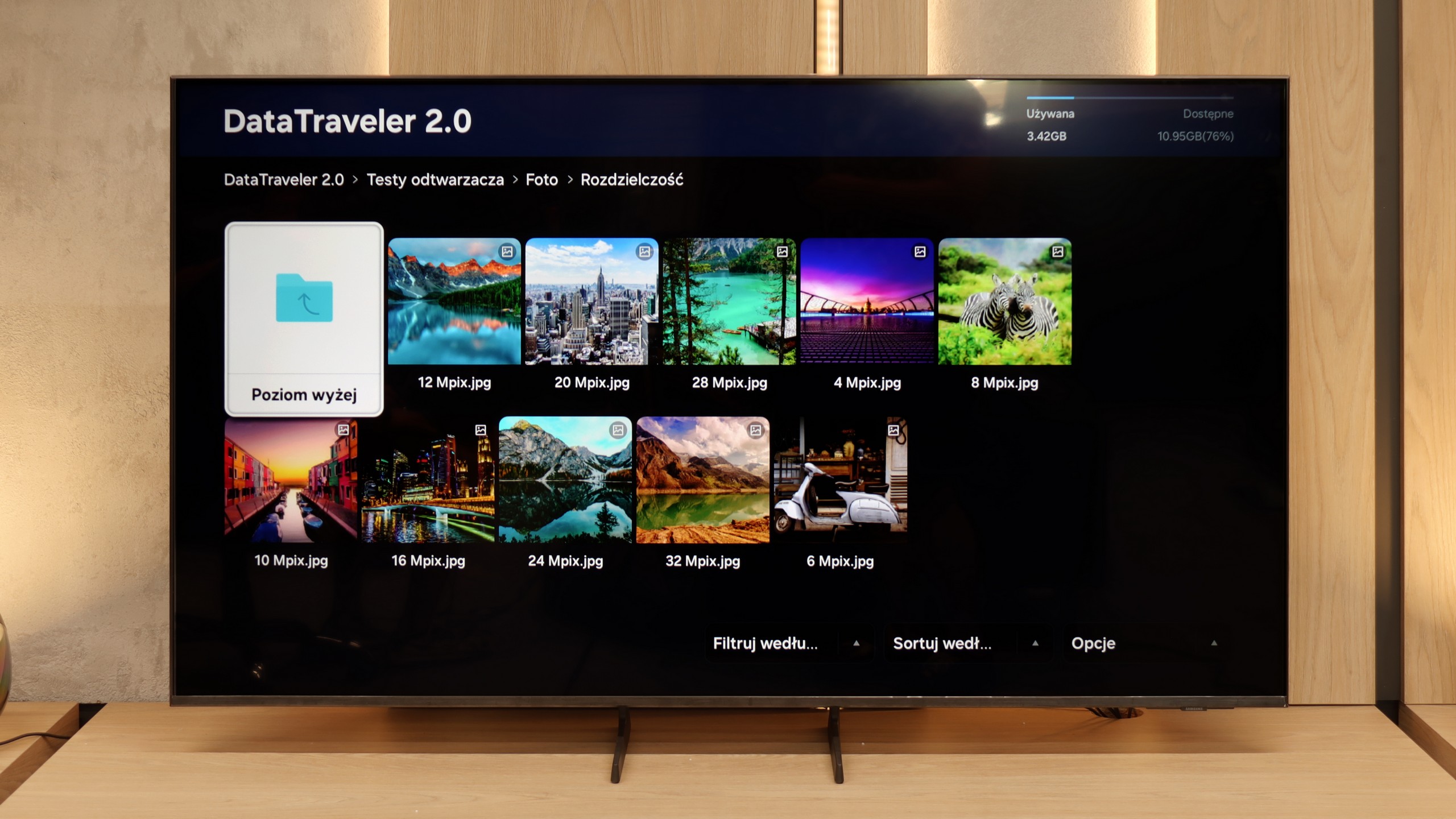
The basic file player in Xiaomi S MiniLED 2025 does its job for simple video materials. However, a noticeable drawback is the lack of support for Polish characters, which can be problematic for those using subtitles.
Fortunately, the presence of the Google TV system allows for an easy workaround of this limitation. Thanks to it, alternative file playback applications can be installed, which handle Polish characters and offer much more extensive options. As a result, the limitations of the built-in player are not as burdensome as one might think.
In the Q7F we have a built-in file player, and as is usually the case with Samsung televisions, it works quite well – most popular films or music will play without fuss. For basic use, it is sufficient, and there is no real need to reach for external solutions like connecting a laptop. It is worse if someone wants to upload photos – here it can lag, especially with Apple's HEIC or PNG, which are visible in the player menu but do not necessarily want to work.
Apps
9.6/10
8.7/10














































Sound
6.8/10
5.8/10
- Maximum volume-80dB
- Dolby Digital Plus 7.1
- Dolby True HD 7.1
- Dolby Atmos in Dolby Digital Plus (JOC)
- Dolby Atmos in Dolby True HD
- DTS:X in DTS-HD MA
- DTS-HD Master Audio
Xiaomi S MiniLED 2025 plays really nicely and even offers a light bass, reminiscent of the sound known from the lower model, namely A Pro 2025. The sound is well balanced, making watching films or listening to music comfortable, even without additional audio equipment. Interestingly, the television effortlessly supports audio formats such as Dolby Atmos and the less common DTS:X. This means you can connect a home cinema system or soundbar and enjoy spatial sound without any difficulties. A nice addition is also the presence of a standard speaker jack.
The Samsung Q7F comes with a 20 W speaker system and… well, let’s not kid ourselves, it’s nothing revolutionary. The television itself sounds quite decent, meaning we can clearly hear series, news, or daily programmes; dialogues do not get lost, but there’s a significant lack of depth and sound space. There is virtually no bass; it thuds somewhat, but it resembles more of a box being tapped rather than true low tones. Music comes across flat, and films don't make any significant impression – we won’t feel like we're in a cinema. It’s sound from the ‘acceptable’ category, just enough to have something built-in, but if someone is counting on a stronger experience, they will inevitably reach for a soundbar sooner or later. And to be honest – even the simplest model will make a considerable difference, and Samsung has quite a few in their offering.
Acoustic Measurements
No acoustic data
80dBC (Max)
75dBC


